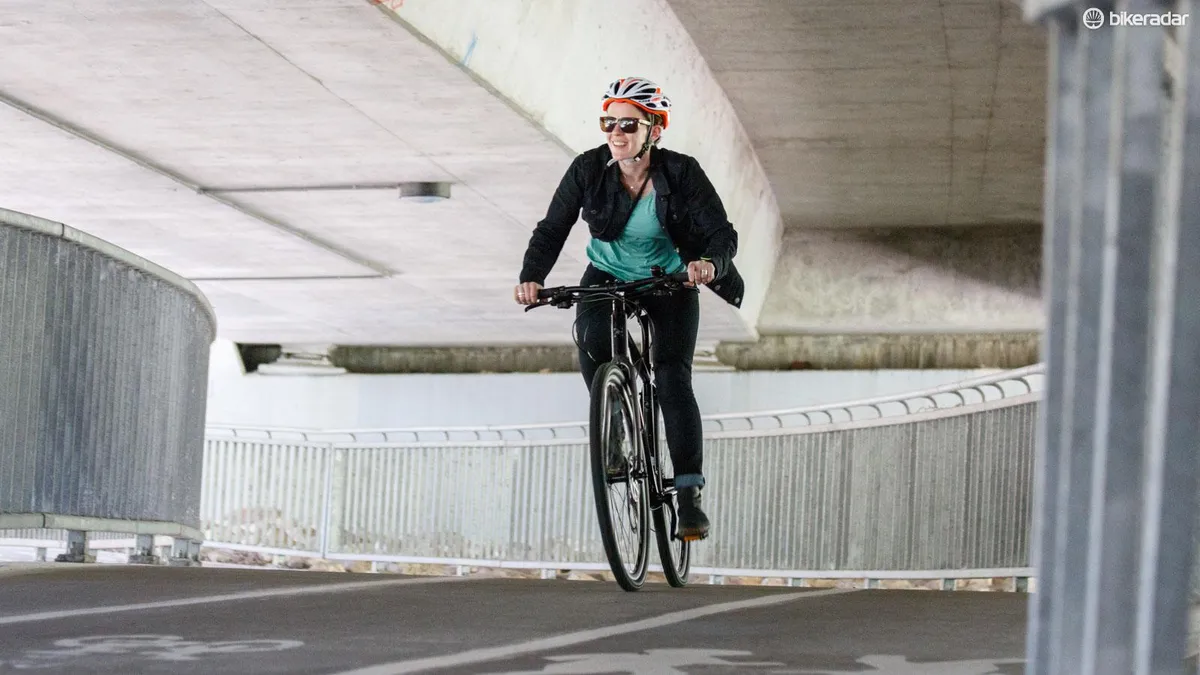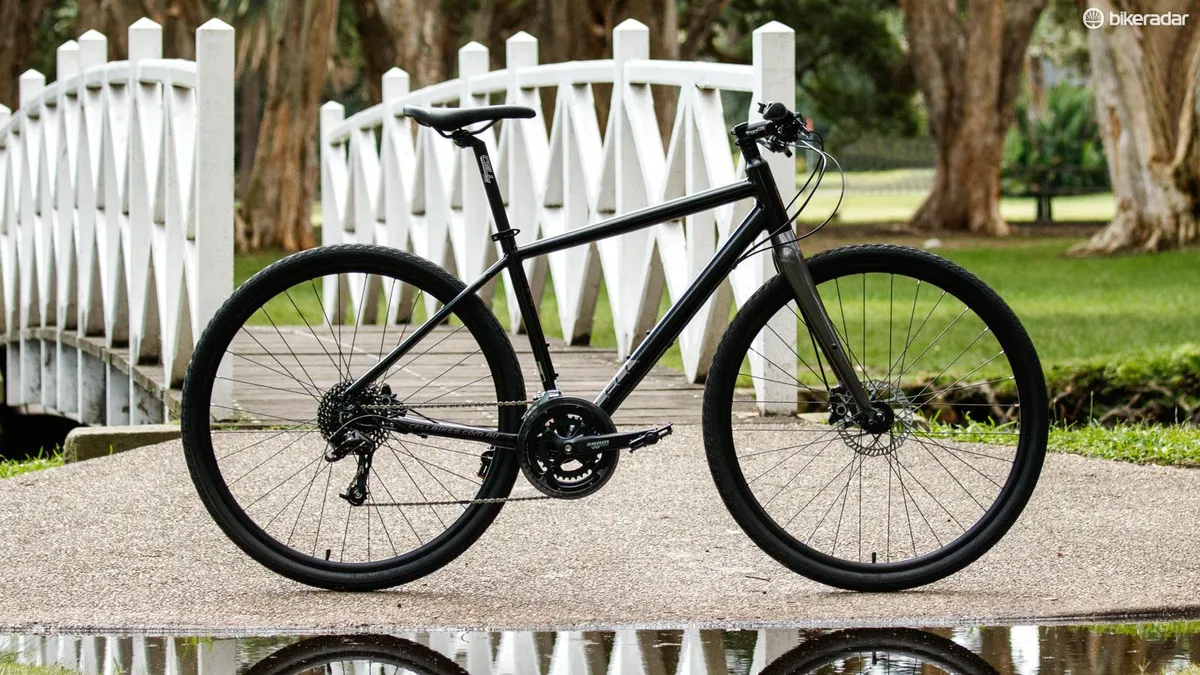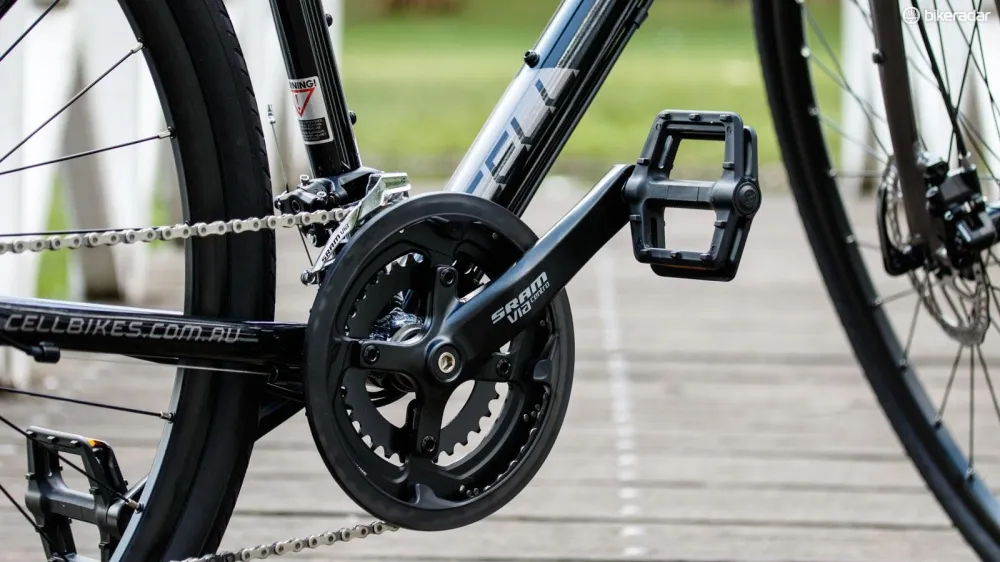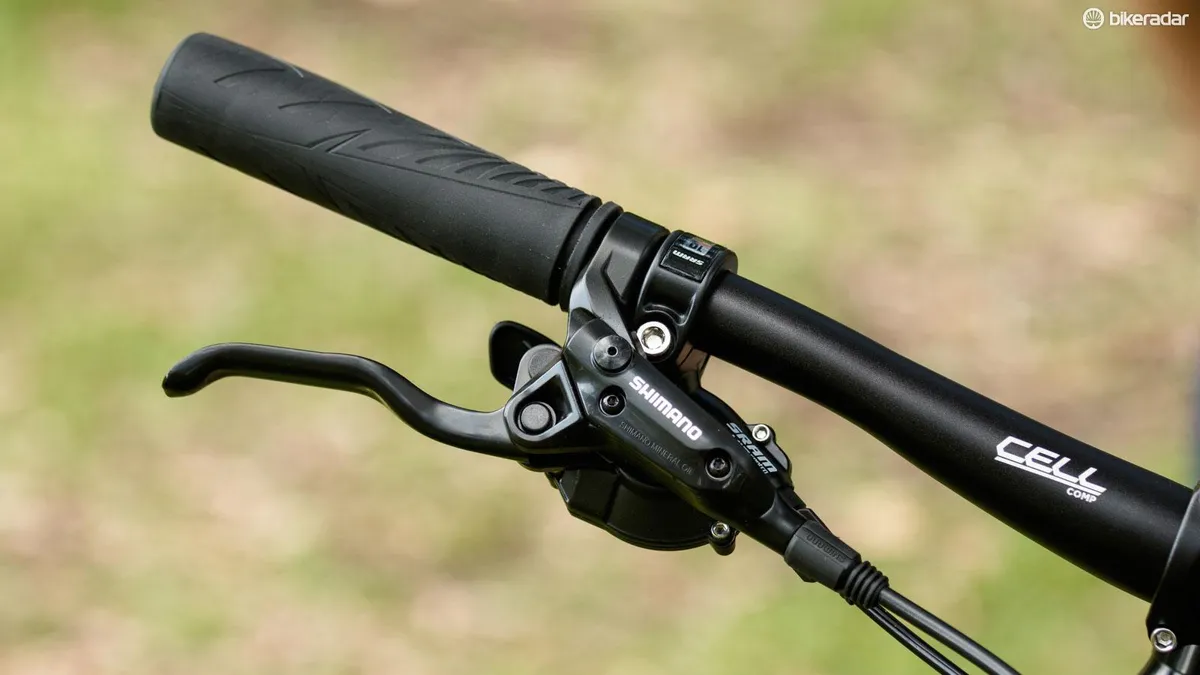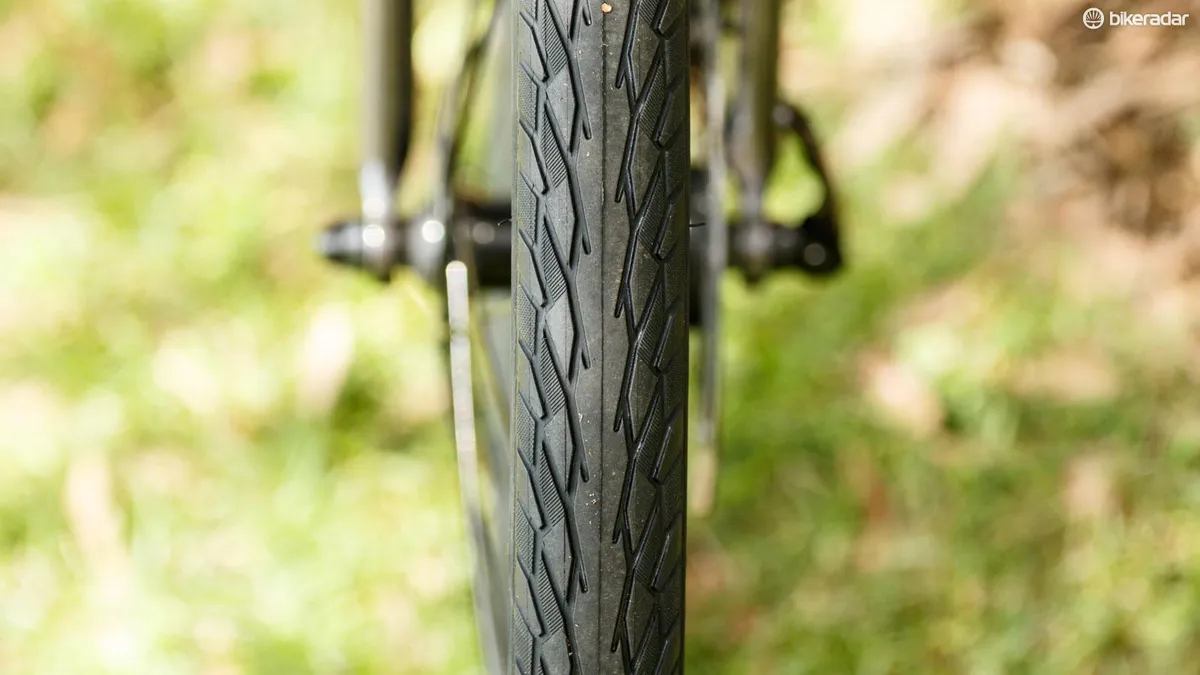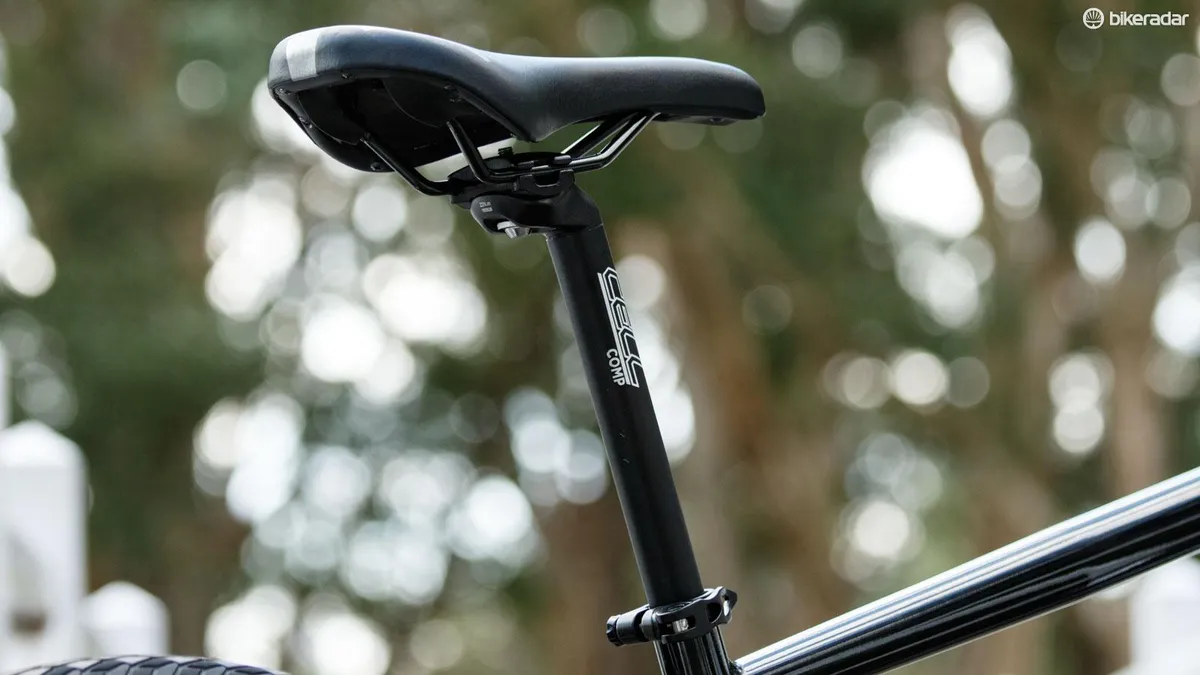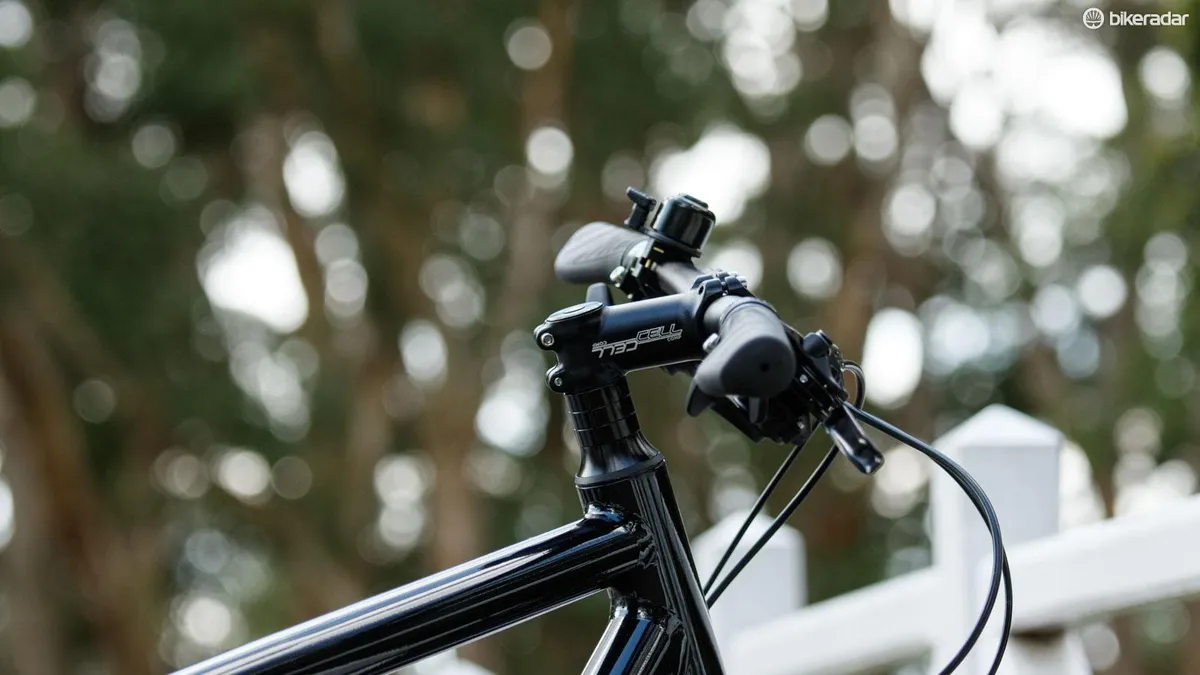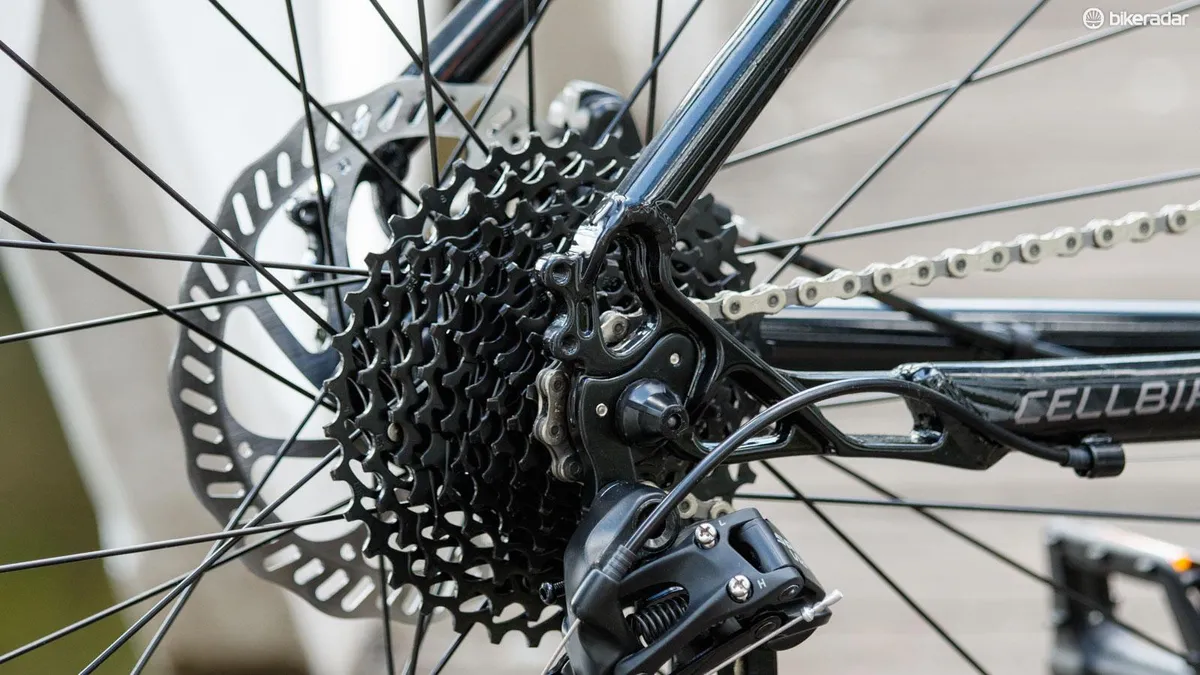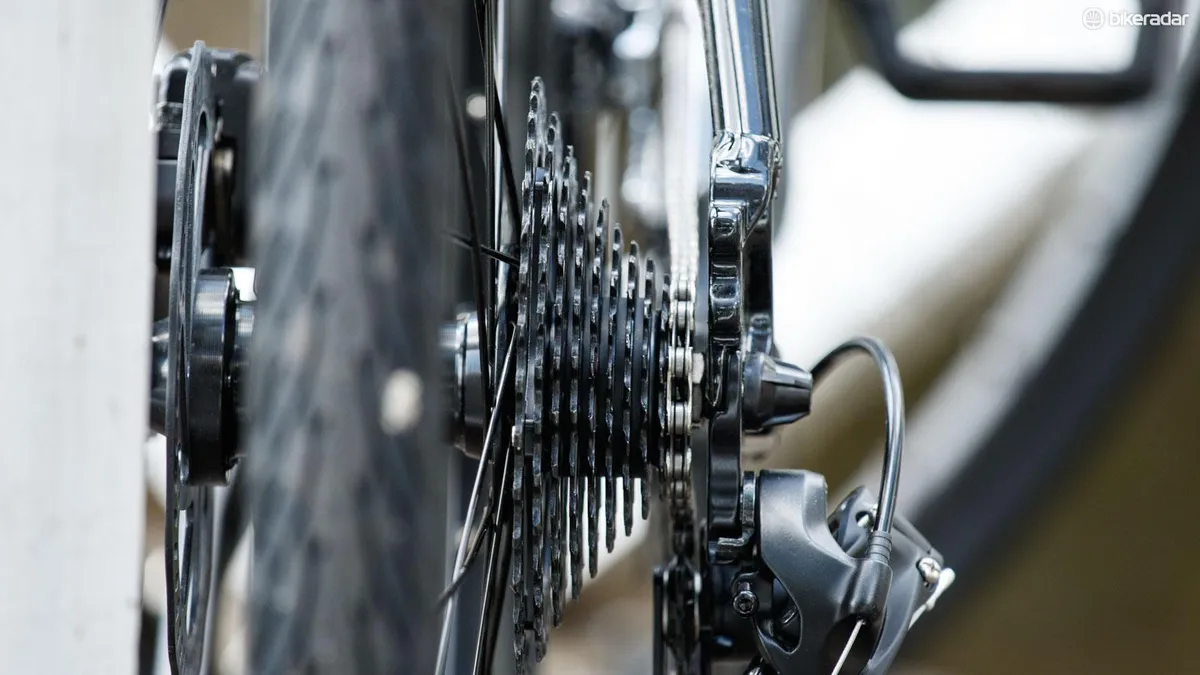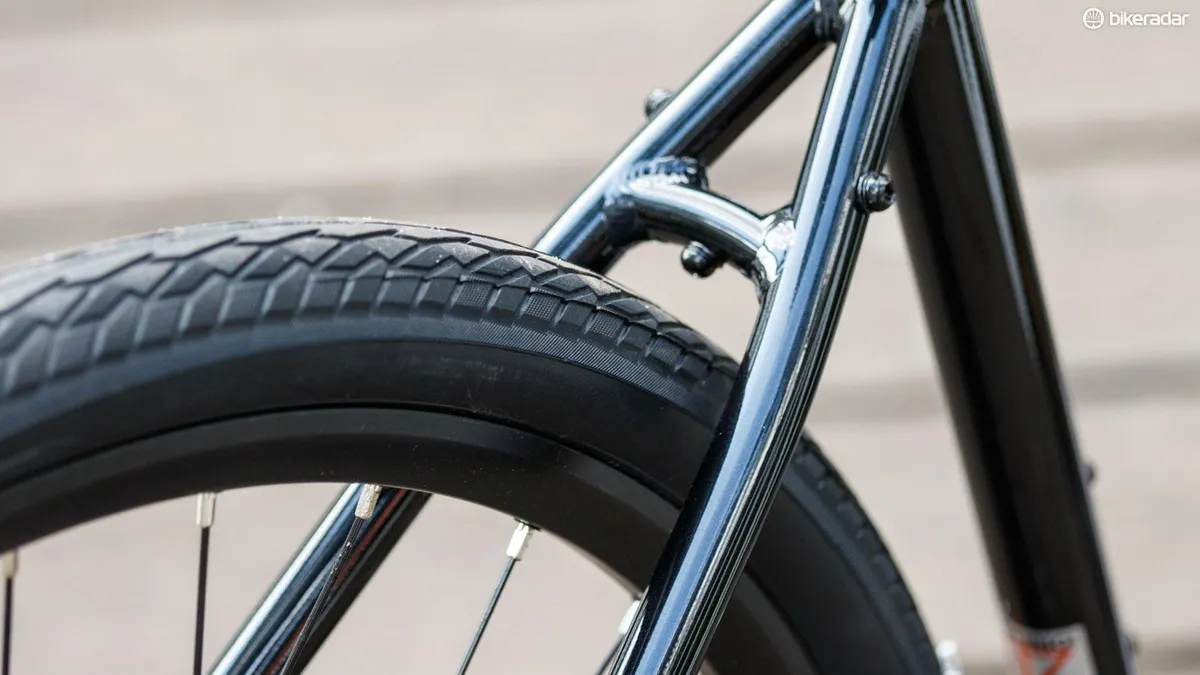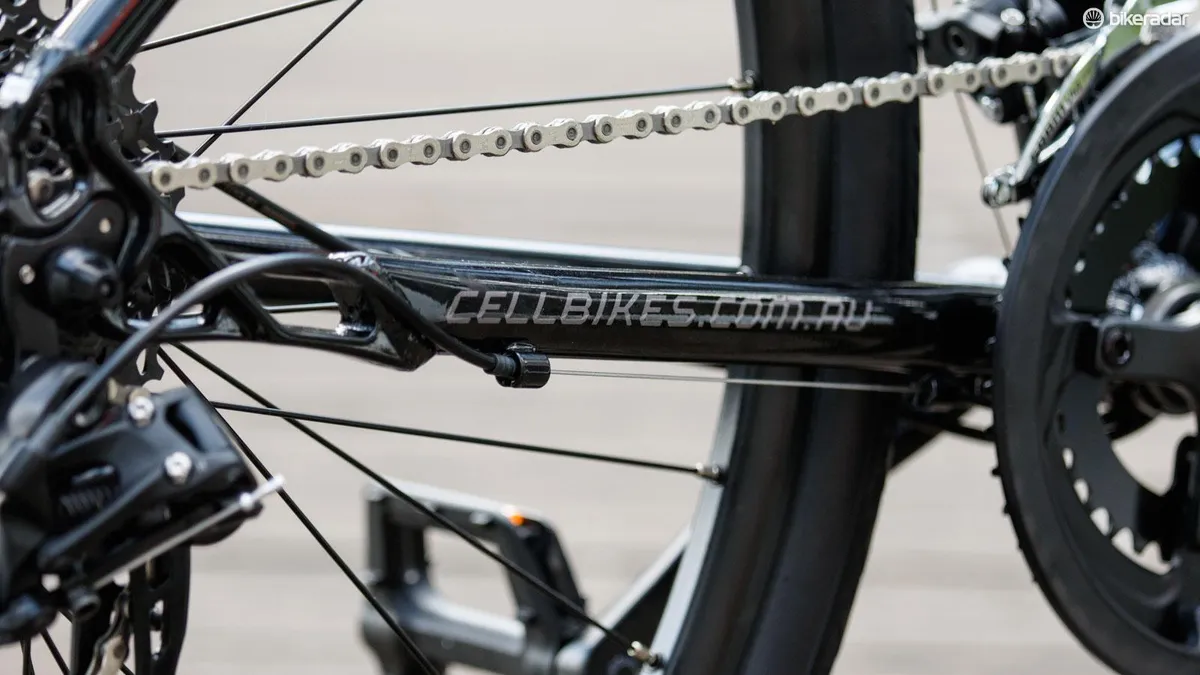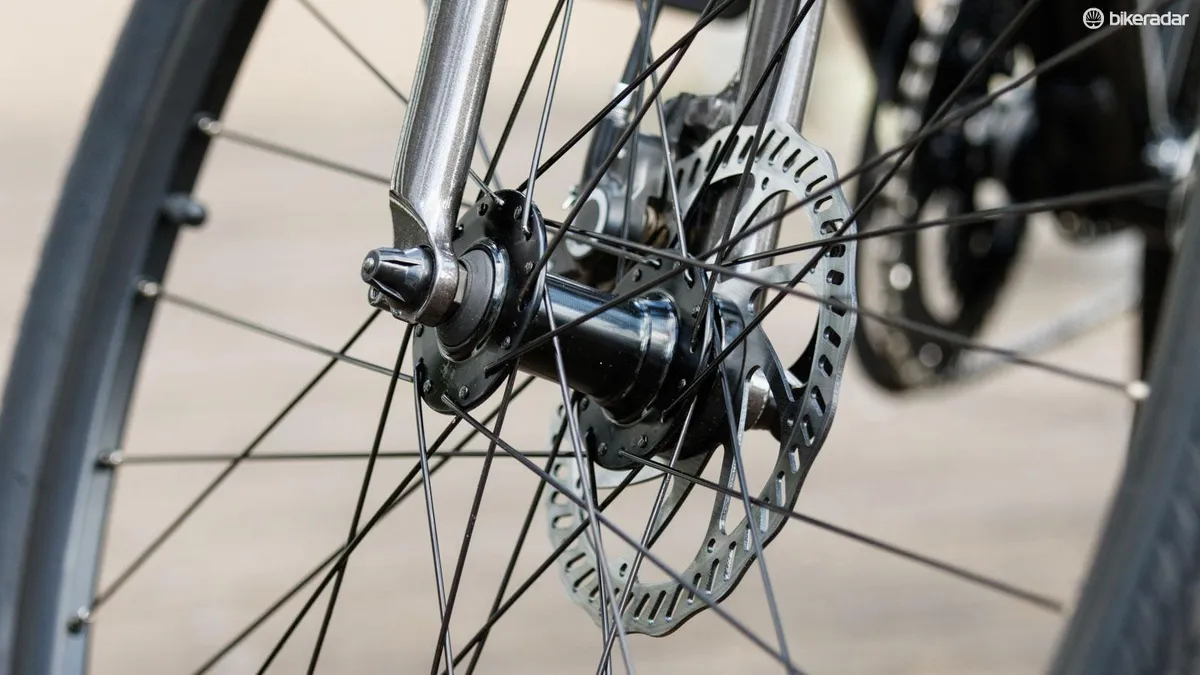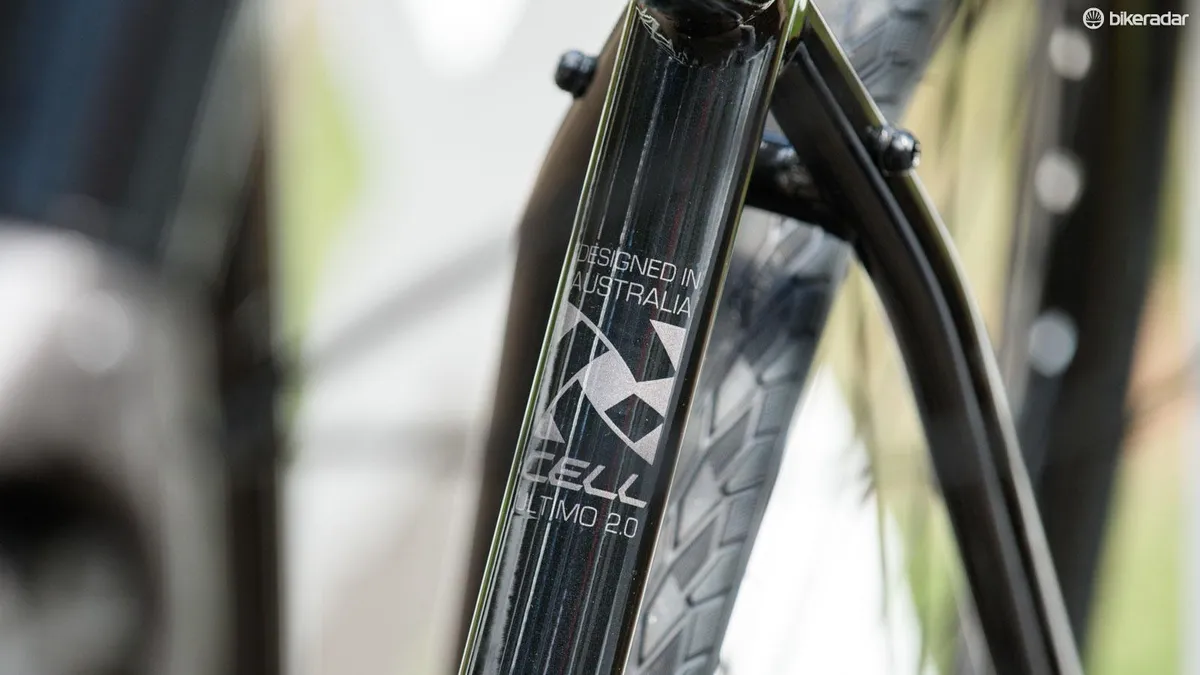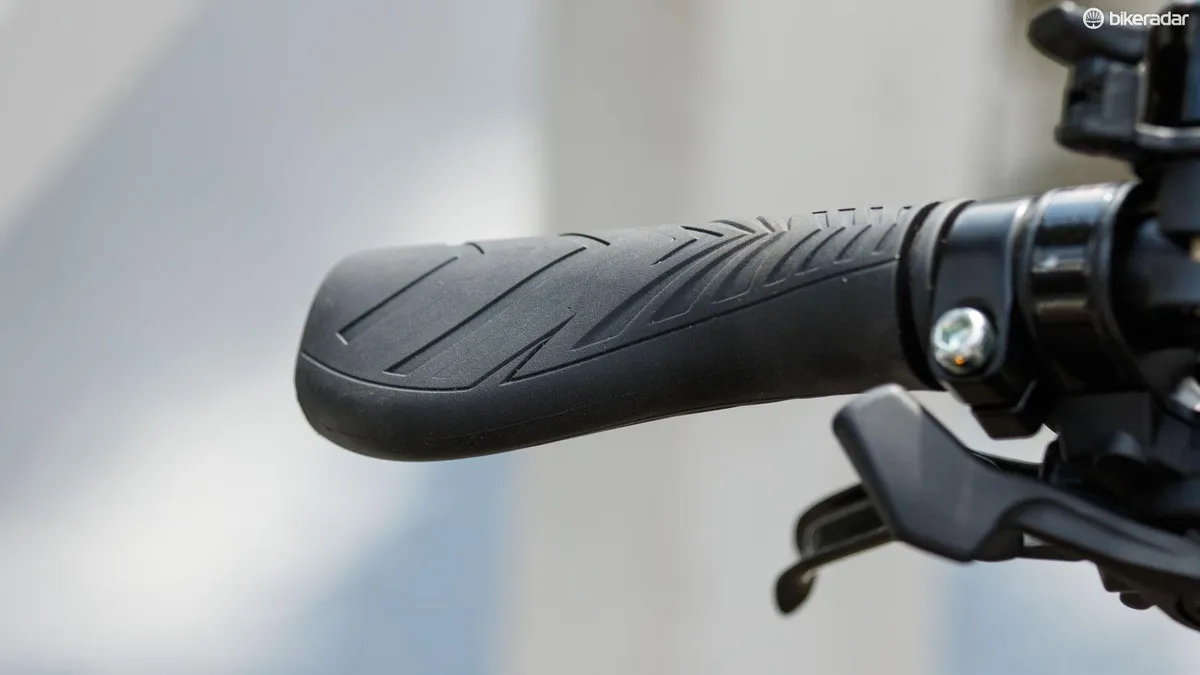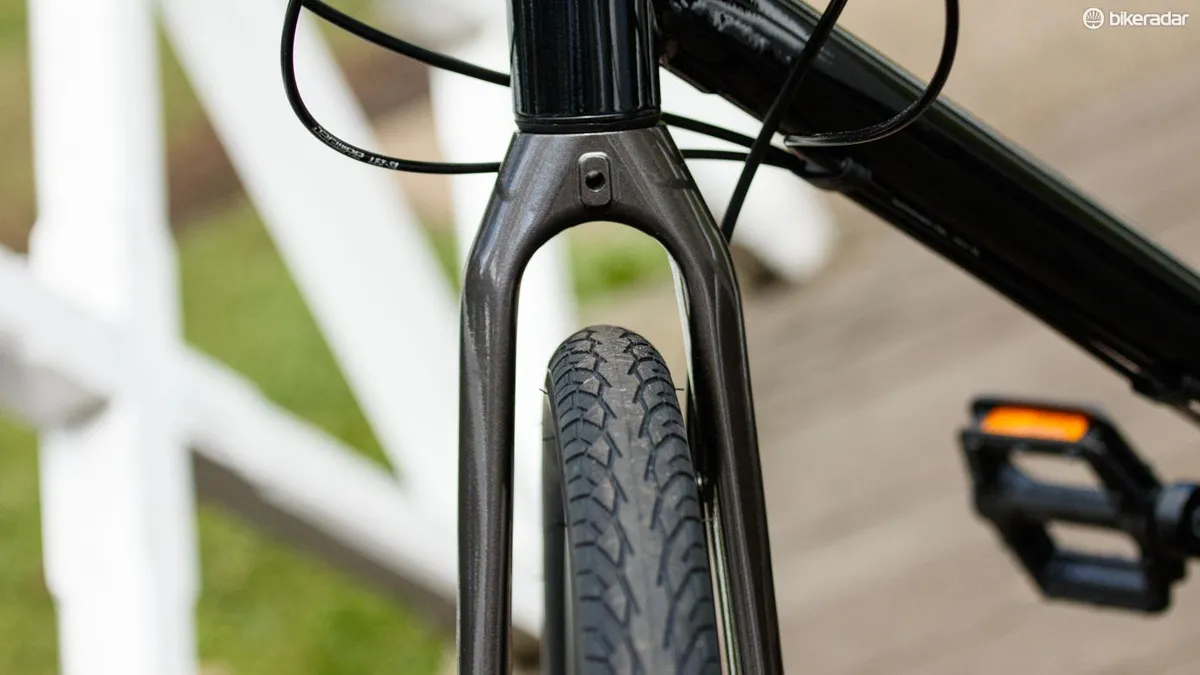The Cell Ultimo isn’t a bike that asks for attention. In fact, it’s a little bland to look at – and it has intentionally been done this way.
Sure it’s nice to have a good-looking bike. But it’s better to have one that goes unnoticed when you just want to get from A to B, and have the bike waiting for your return back to point A.
Cell Bikes is one of Australia's leaders in offering consumer-direct bikes. The Ultimo, a bike named after a densely populated urban area of Sydney, is the brand’s latest offering – and one that’s aimed at the person looking to get healthy and/or ditch the car.
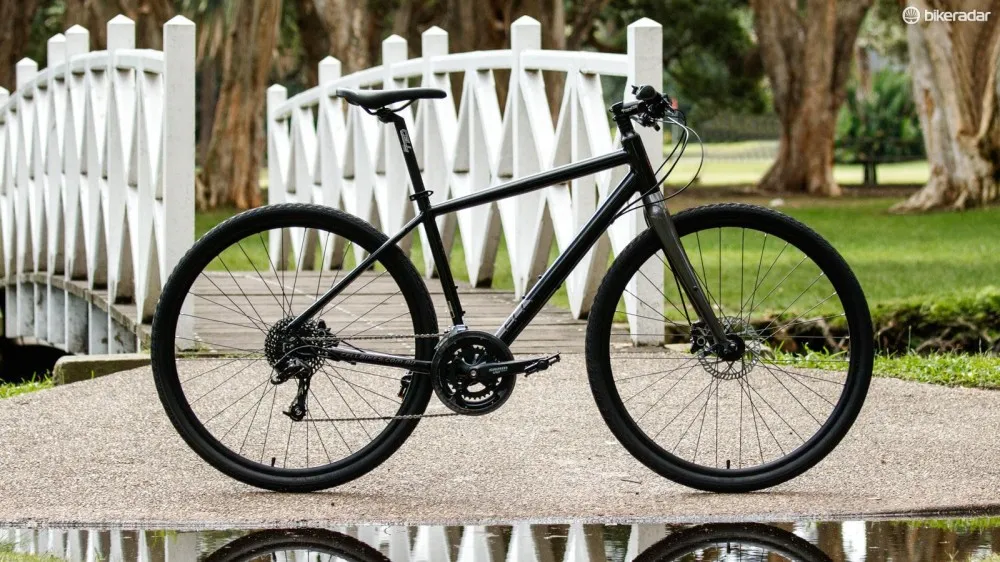
The Cell Ultimo 2.0 as tested
We received the all-new Cell Ultimo 2.0 for review. At AU$899, it’s priced at AU$300 more than the base-model Ultimo 1.0. While the frame and fork construction are different, there are many similarities between the two. With this, what we say of the more expensive model is for a large part valid for those seeking the cheaper option.
Related: Cell Bikes reviews and news
Ride and handling: mountain bike-like, but with greater speed
Much like the aesthetics, the ride of the Ultimo isn't exciting. It rides smoothly and securely, conquering poorly maintained bike paths and multi-use surfaces. It does it without complaint, humming along with its 38mm width tyres (for comparison, road bikes usually come with 23-25mm tyres).
Hit a significant jolt in your path though, such as the lip to a bike path or pothole, and you'll surely know it. The aluminium frame and fork are rigid, and the big-bag tyres do the lion’s share to soothe the road.
That frameset rigidity does have its benefits, and even larger riders won’t have any issues with the frame twisting under their steam. The Ultimo is quite nippy in its handling, and cutting through traffic or manoeuvring tight bike lanes isn’t a concern.
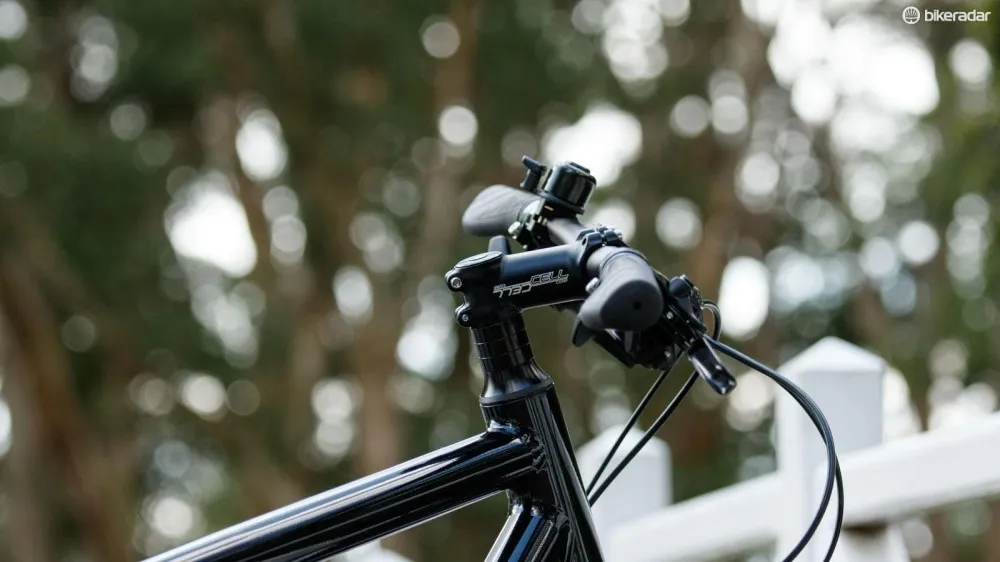
Upright handlebar height
Fitting similar to a mountain bike, the Ultimo measures up rather short. This places you in an upright position that's better suited to cruising with than hammering past the traffic.
This means your eyes are naturally in a place to best see your surroundings, and your back is at an angle where it's unlikely to start complain about your years of poor posture at the desk.
That said, riding up steep hills in Sydney did reveal some subtle handling quirks. The short and upright position feels a little awkward and 'tippy' to ride out of the saddle. It's possible to overcome this by dropping the handlebar height by shuffling the headset spacers, but we suspect most novice riders won't tumble straight to this solution.
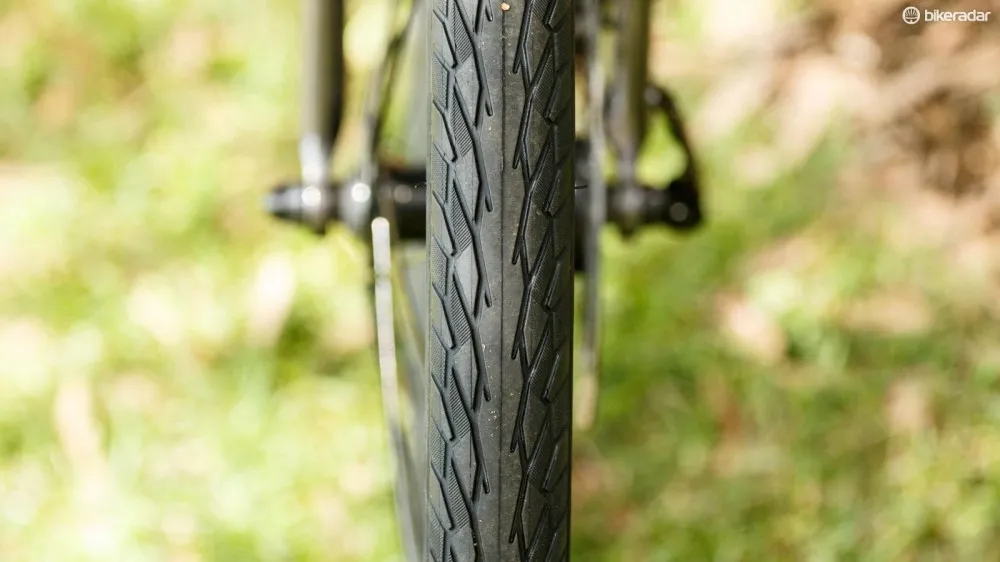
These tyres grip nicely to a variety of surfaces
The same high handlebar makes it a little nervous leaning into sharp corners. But despite the high centre of gravity, there's plenty of traction on offer from those generously large tyres.
Frame and equipment: All in the name of the urban environment
The Ultimo 2.0 is built around a triple-butted, ‘hydroformed’ frame. Put simply, this is good for the money.
Triple butted refers to how the frame’s tubes are made up of multiple thickness (three, even) along their length. This relieves weight out of the centre of the tubes, while keeping strength at the edges for the force loads.
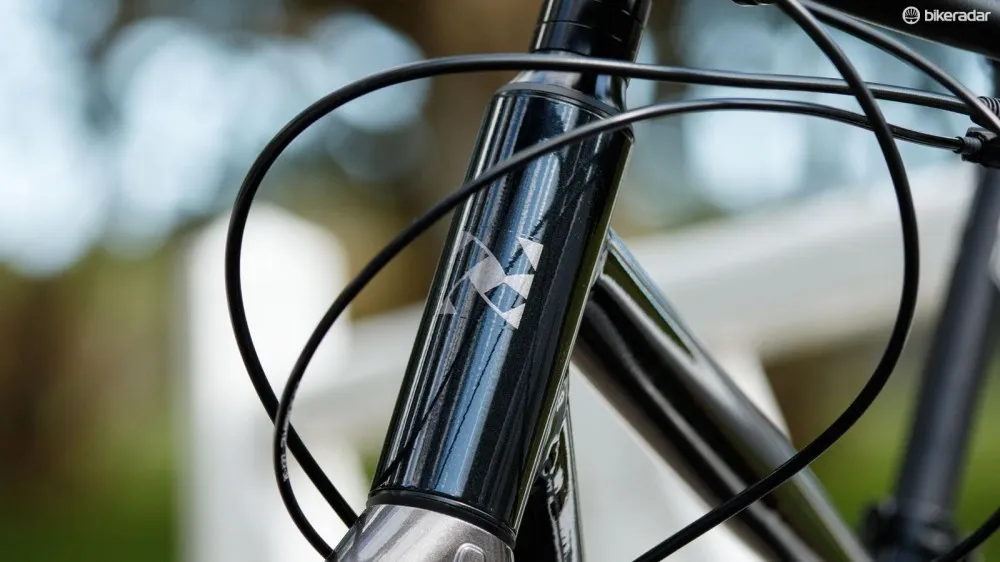
The modifications to tube shapes are extremely subtle
Hydroforming is a process quite common in the cycling industry, where high pressure liquids are used to mould tubes into specific shapes. When looking at aluminium frames of current bicycles, if the tubes aren’t round it’s likely they have gone through some type of hydroforming.
In the case of the Ultimo 2.0, the most obvious use of the hydroforming technology is in the down tube, where the oblong shape is used to provide frame stiffness under power without the use of an enormous round tube.
Up front sits an aluminium fork with a fancy forged crown. Steel forks are quite common on bikes like this – as are carbon ones – so we spoke with the bike's designer, Dave Musgrove, regarding this choice.
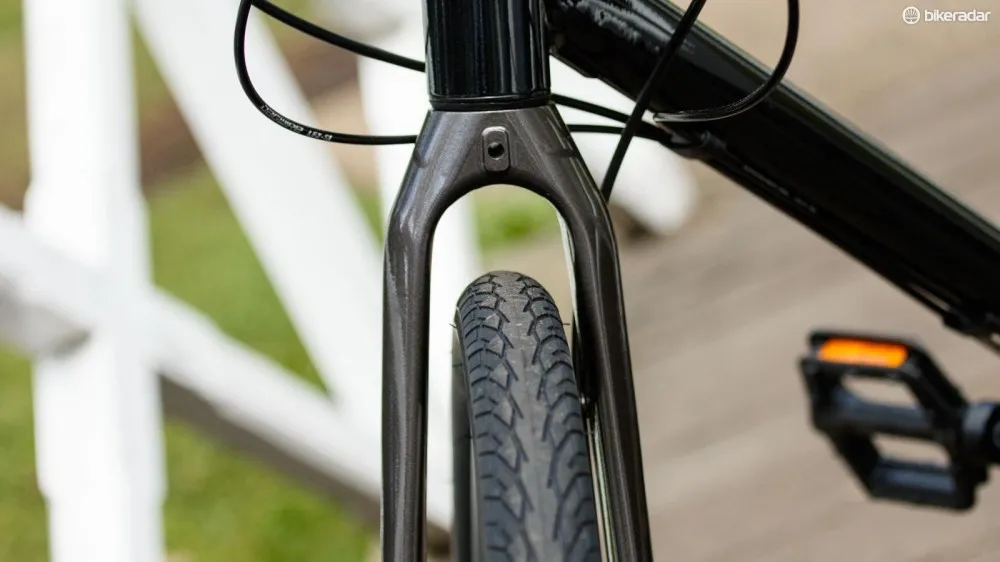
The alloy fork is surprisingly high end
“This fork was actually quite expensive, not much cheaper than a basic carbon fork and about 100g lighter than a high quality steel option," he told us. "The main deciding factor on the Ultimo to go aluminium over carbon was durability.
"An aluminium fork can handle more impacts when racking (storing) your bike with others; also the lowrider rack mounts can handle more weight on a aluminium leg, than on carbon," Musgrove added. "Front racks/panniers are becoming more popular for commuters and tourers so I wanted customers to have the option to load it up without a worry.”
The rear also offers mounts for common fenders and panniers. Given the general build of the frame, larger loads should not be an issue.
Designed for use in foul weather, the bike’s cables are run in full-length housing down the frame. We'd like to have seen this continued for the last segment before the rear derailleur, further sealing out the grit. However, with how Cell has done it, it’s possible to clean and lube the cable without having to replace it.
As we mentioned previously, the bike is rather bland in its appearance. It's supplied with compliant bolt-on reflectors, but our ideal would be to have some reflective panels that light up at night, or at least some stripping on the tyres. Unfortunately there’s no such inclusion, and so you’ll need to buy and add your own reflective stickers if you like the idea.
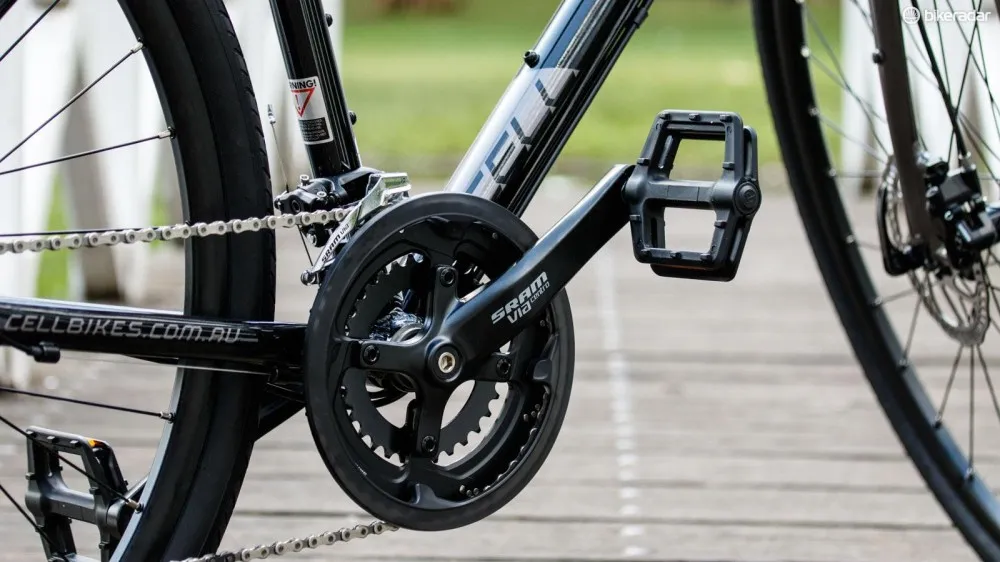
Huge in mountain biking, SRAM is a brand that's less common in this style of bike
Look to the gearing, and the Ultimo’s value starts to shine through its black appearance. Here, the bike features a fitness and urban-orientated SRAM Via Centro transmission. It’s respectively lightweight for its price point.
Offering 10 gears out back, and two in the front, this 20-speed transmission is most comparable to Shimano Deore. The shifting is accurate with an easy thumb-operated trigger shifter at the handlebar.
The 48/32t front gearing combined with a wide 11-36t cassette offers enough range for fast, flat speed pursuits and slow grinding climbs too. It's not pretty, but the plastic chainguard mounted off the big chainring does well keeping your casual pants out of the chain.
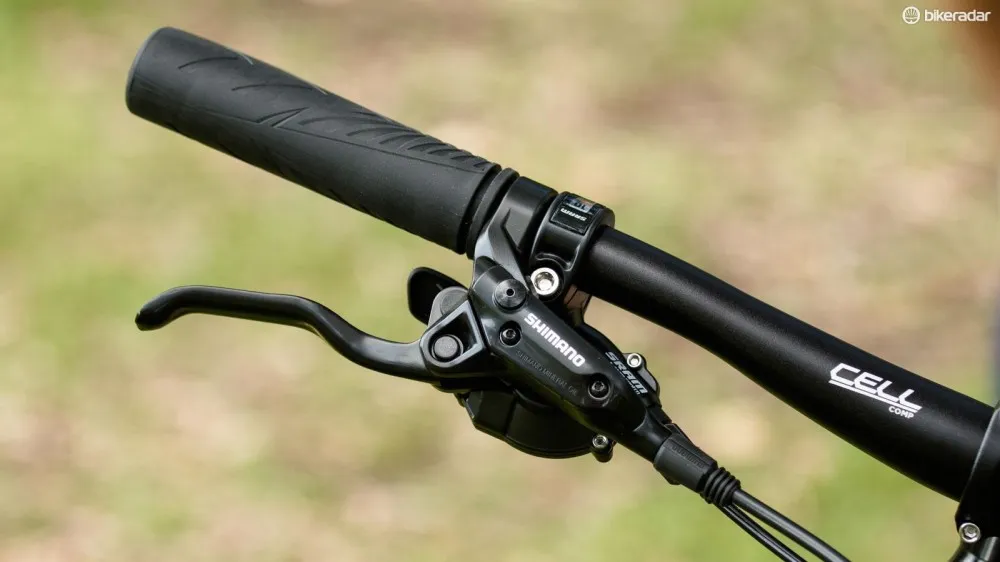
Take comfort in these brakes
Pulling to a stop is a simple and reliable process thanks to the Shimano hydraulic disc brakes. We’ve had nothing but success with these in the past, and as long as you keep oils away from them they'll prove perfectly trustworthy. A wide lever reach adjustment range means even petite-handed riders will have easy reach to the brakes.
The unlabelled wheels have proved strong. They’re actually the same items used on some 29er mountain bikes, and are built for off-road abuse. (Compared with the Ultimo 1.0, the 2.0’s hubs in the centre of the wheels are more durable ones.)
Wrapping those solid wheels are unbranded 38c tyres. These have proven to be consistent in traction, durable and with respectable puncture resistance (we didn’t get any flats, despite purposely riding over glass).
All touch points feature Cell branding. The saddle is well padded and slick, so it won't rub up your favourite jeans the wrong way. The alloy handlebar, stem and seat post are all basic items but well suited to their intended task. The same goes for the plastic pedals, which have proven surprisngly strong and grippy.
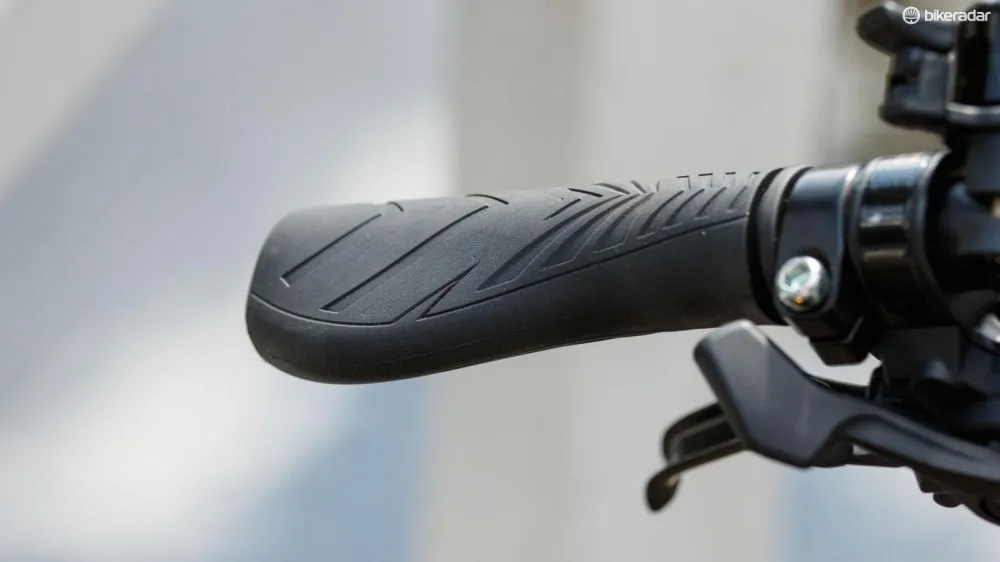
Twisting on the bar, these grips are the one clear failure of the bike
Unfortunately we can’t say the same for the ergo-shaped grips that continuously twist on the handlebar while riding. A more expensive ergo grip which locks to the handlebar will fix the issue, as will any standard round grip.
Depending on how you’re securing the bike when not in use, the quick-release wheels and seatpost may pose an issue. If so, we’re told Cell can supply the bike with a set of security skewers (including a seat collar bolt) for approximately AU$30.
Build quality: sold direct, how you receive it does matter
While you can walk into one of two Cell stores and roll out with a built bike, many will take Cell up on its free shipping offer. With this, you’ll receive the bike in a flat-pack state with the front wheel, seatpost, handlebar and pedals all needing to be attached.
Related reading: Australia's best direct-buy road bikes, including build quality comparison
We must say that Cell has come a long way in recent years with its build quality, and the bike you unbox these days is night and day better than that of the past. For us, giving the bike a close check over revealed nearly no adjustment or setup issues to contend with.
The only niggle we found was the front shifting being slightly out, where the derailleur could over-shift the chain into the plastic chainguard. Sure this isn’t ideal, but that guard stops the chain from going anywhere and the bike could be ridden as-is.
Conclusion
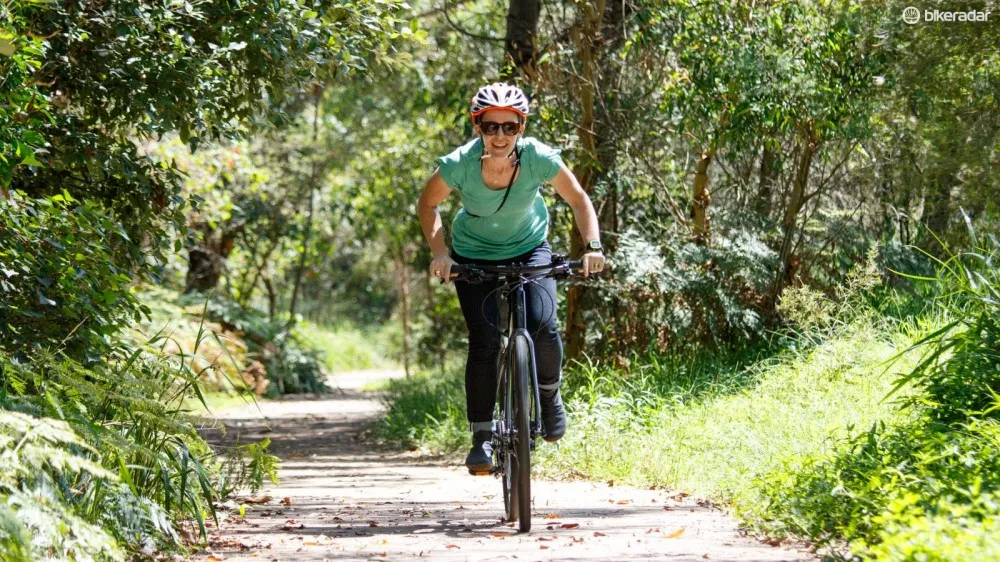
If you’re looking for a fuss-free commuter, the Ultimo is a solid choice. While it’s not the most exciting bike in any form, it does exactly what it needs to do and does it well.
Even though the Ultimo 2.0 offers a lighter weight frame and fork, along with a better transmission, we can’t help but feel the Ultimo 1.0 is the better deal. The Ultimo 2.0’s hubs and gears will outlast those of the cheaper model, but there’s also so much in common between the two that makes the $300 difference a tough decision.
Simply, if you’re looking to get plenty of use out the bike or want it lighter for carrying up stairs, then spend the extra. However, if it’s for occasional urban use – save your money and put it towards a good-quality lock and some stylish jeans.
